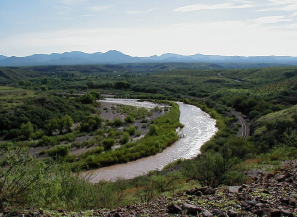The heat island effect in Phoenix, Arizona

Territorial Phoenix didn't have air conditioning, but it had trees. From the 1860s until the 1920s, which is when air-conditioning started to become popular, the city was a forest of trees. The canals were lined with trees. Houses almost disappeared behind trees. Tall trees arched over roads casting deep shade. I'm not suggesting that the summers were even close to being comfortable in territorial Phoenix, but at least the city wasn't actually heating itself up. That started with the two things - air conditioning, and cars. The Evans House in 1904, 11th Avenue and Washington. The house is still there, but the trees are gone. If you've ever stood next to an air conditioner, or a car, you know that the vast majority of the energy that they consume is expelled as heat. And if you multiply that by millions of these heat-generating machines operating at the same time, you would see that it brings up the air temperature quite a bit. But that is just the beginning ...






















